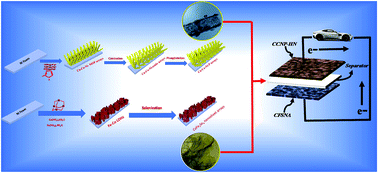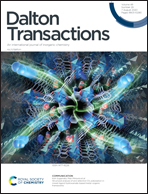A rational design of nanoporous Cu–Co–Ni–P nanotube arrays and CoFe2Se4 nanosheet arrays for flexible solid-state asymmetric devices†
Abstract
Porous structures have attracted considerable attention as promising electrode designs for supercapacitor applications. Herein, we introduce a procedure towards the construction of nanoporous CuCoNi–P nanotube arrays (CCNP-NAs) by a metal–organic framework and hierarchical CoFe2Se4 nanosheet arrays (CFS-NAs) through a hydrothermal strategy, followed by selenization for the flexible asymmetric device. Due to the unique design of the electrode materials, the CCNP-NA and CFS-NA electrodes show exceptional specific capacities of ∼406.73 and 248.2 mA h g−1 at 2 A g−1, reasonable rate capabilities of 84.2 and 71.2% at 50 A g−1, and remarkable durability of 98.9% and 95.1%, respectively. Remarkably, an advanced flexible device was constructed using the CCNP-NA positive electrode and CFS-NA negative electrode. Our flexible device demonstrates tremendous energy density (∼153.5 W h kg−1 at 852.8 W kg−1), super-high durability of 96.2%, and considerable flexibility under bending conditions. This work proposes insight into the rational construction of porous nanostructures for next-generation electronic devices.



 Please wait while we load your content...
Please wait while we load your content...